Recent Blog Posts
Can I Prove My Parent Fell Because of Nursing Home Neglect?
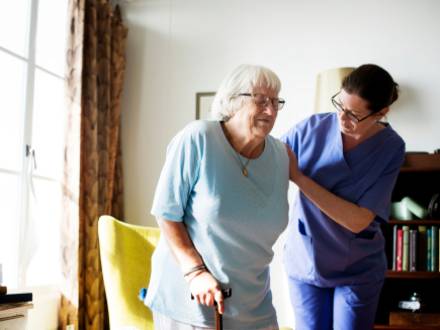 Falls among nursing home residents are the primary cause of injury, hospital admissions, and lawsuits. Falls are also the leading cause of death from injury among those 65 and older, with elderly adults suffering an estimated 29 million falls per year. In fact, about half of all nursing home residents will fall in any given year, leaving some with serious injuries and causing death for others.
Falls among nursing home residents are the primary cause of injury, hospital admissions, and lawsuits. Falls are also the leading cause of death from injury among those 65 and older, with elderly adults suffering an estimated 29 million falls per year. In fact, about half of all nursing home residents will fall in any given year, leaving some with serious injuries and causing death for others.
Falls often go unreported in nursing homes, which means the elderly person who fell must suffer in silence, while his or her loved ones may not even be told about the fall. Even though falls are common for elderly patients in nursing homes, most falls are preventable. Almost one in three elderly nursing home residents who fall will fall again within a year.
Lincolnshire Nursing Home Accused of Neglecting Leg Wounds
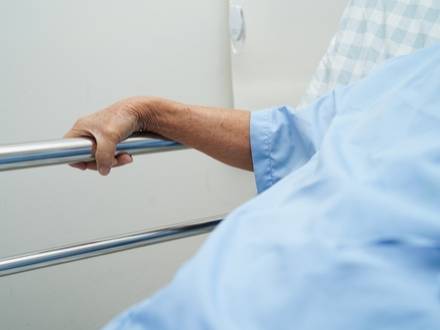 Several months ago, a Lincolnshire nursing home was accused of nursing home abuse and neglect by a woman whose husband died from an infection of his leg wounds. The woman claimed that improper care resulted in her husband’s sepsis and subsequent death. The same facility faced unrelated claims regarding a major staffing shortage that left elderly patients with no medical care for hours.
Several months ago, a Lincolnshire nursing home was accused of nursing home abuse and neglect by a woman whose husband died from an infection of his leg wounds. The woman claimed that improper care resulted in her husband’s sepsis and subsequent death. The same facility faced unrelated claims regarding a major staffing shortage that left elderly patients with no medical care for hours.
The woman stated her husband’s leg wounds (the result of diabetes) were being properly treated when he was first admitted to the nursing home, but that in May 2023, the nursing home changed owners, and the level of care dropped significantly. The woman said her husband's leg wounds were so bad the bones could be seen and that he was transported from the facility to the hospital for confusion and paranoia related to sepsis infection.
Infectious Outbreaks in Nursing Homes a Threat to Residents
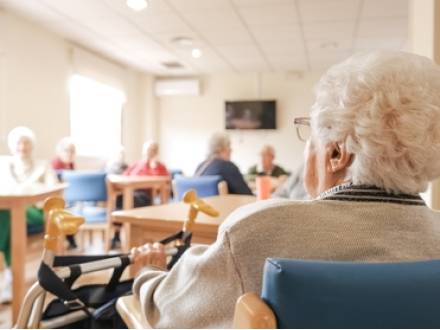 Most adults who are relatively healthy rarely think twice about an infectious disease being potentially deadly to them. We may have a bout of the flu from time to time or a cold, but most of us do not spend a lot of time worrying about catching an infectious disease. Nursing homes place a significant number of elderly people with weakened immune systems in close quarters. While not ideal, this, in and of itself, is not usually the cause of infectious outbreaks in a nursing home.
Most adults who are relatively healthy rarely think twice about an infectious disease being potentially deadly to them. We may have a bout of the flu from time to time or a cold, but most of us do not spend a lot of time worrying about catching an infectious disease. Nursing homes place a significant number of elderly people with weakened immune systems in close quarters. While not ideal, this, in and of itself, is not usually the cause of infectious outbreaks in a nursing home.
The key to avoiding nursing home infectious outbreaks is relatively simple. Every staff member must wash his or her hands after every interaction with a patient. Antibacterial gel, in addition to vigilant hand washing, can often keep infectious diseases from spreading quickly through a nursing home. Making sure patients’ sheets, pillowcases, and blankets are washed and changed frequently can also help prevent infectious diseases.
Staff members who ignore hygiene and best practices or allow a resident to live in unsanitary conditions are committing a type of nursing home abuse that can cause severe illnesses. If your loved one has become extremely ill – or even died – from an infectious disease that spread because of lax hygiene practices, speaking to a Chicago, IL nursing home attorney from Schwartz Injury Law can be beneficial. The Illinois Nursing Home Care Act entitles residents to live in clean, sanitary conditions, free from abuse and neglect.
Can Short Staffing in Nursing Homes Lead to Abuse and Neglect?
 In July 2024, it was reported that despite a new federal rule setting tighter nursing home staffing standards, just 16 percent of Illinois nursing homes are in full compliance. In fact, in some nursing homes, the time between a patient turning on a "call light" to ask for help and a nurse arriving to provide that help is 45 minutes or longer.
In July 2024, it was reported that despite a new federal rule setting tighter nursing home staffing standards, just 16 percent of Illinois nursing homes are in full compliance. In fact, in some nursing homes, the time between a patient turning on a "call light" to ask for help and a nurse arriving to provide that help is 45 minutes or longer.
Since many of those calls for help involve a true emergency, the time it takes for a resident to get help is simply unacceptable. In May 2024, the Centers for Medicare and Medicaid Services issued new federal staffing minimum rules to help residents get the care they need.
How Can Hiring a Nursing Home Abuse Attorney Help Victims Win Their Cases?
 When a loved one suffers abuse or neglect in a nursing home, hiring an attorney can be the most important part of pursuing justice and winning a case. An Illinois nursing home neglect lawyer understands the specific laws that protect residents and knows how to fight for the victims and their families. By leveraging their legal expertise and resources, an attorney can build a stronger case, helping the victims and their families get fair compensation and hold the nursing home accountable.
When a loved one suffers abuse or neglect in a nursing home, hiring an attorney can be the most important part of pursuing justice and winning a case. An Illinois nursing home neglect lawyer understands the specific laws that protect residents and knows how to fight for the victims and their families. By leveraging their legal expertise and resources, an attorney can build a stronger case, helping the victims and their families get fair compensation and hold the nursing home accountable.
In our last blog, we discussed when families can tell that it is time to contact a nursing home injury attorney. In this blog, we will follow up by diving deeper into how attorneys help families negotiate settlements and win court cases.
When Should a Family Call a Nursing Home Abuse Lawyer?
 When families make the difficult decision to place a loved one in a nursing home, they expect that person to receive the best care possible. Sadly, not every facility upholds this promise. In Illinois, occurrences of nursing home abuse and neglect can be alarming and distressing. So, when should you, as a concerned family member, consider contacting a nursing home abuse lawyer? Here is when.
When families make the difficult decision to place a loved one in a nursing home, they expect that person to receive the best care possible. Sadly, not every facility upholds this promise. In Illinois, occurrences of nursing home abuse and neglect can be alarming and distressing. So, when should you, as a concerned family member, consider contacting a nursing home abuse lawyer? Here is when.
Identifying Classic Signs of Nursing Home Abuse
Before reaching out to a lawyer, it is important to identify the signs of abuse. Abuse can be physical, emotional, financial, or neglectful. Look for physical signs like strange bruises or cuts. Emotional abuse may also manifest as sudden changes in behavior or mood, such as intense anxiety or depression. Financial abuse can involve missing valuables, sudden bank account changes, or unauthorized transactions. Finally, neglect may be identified through signs such as poor hygiene, unsupervised wandering, and more.
Examples of Serious Fractures in Illinois Nursing Homes
 In Illinois nursing homes, residents often face the disturbing reality of abuse and neglect, which can lead to considerable injuries. Among these injuries, hand and arm fractures, as well as ankle and foot fractures, are particularly severe. These types of injuries can drastically affect a resident’s quality of life and may even require legal intervention to ensure justice can be pursued against any wrongful action. A skilled lawyer can advocate for victims of such incidents and their families, helping them successfully get through the legal system.
In Illinois nursing homes, residents often face the disturbing reality of abuse and neglect, which can lead to considerable injuries. Among these injuries, hand and arm fractures, as well as ankle and foot fractures, are particularly severe. These types of injuries can drastically affect a resident’s quality of life and may even require legal intervention to ensure justice can be pursued against any wrongful action. A skilled lawyer can advocate for victims of such incidents and their families, helping them successfully get through the legal system.
The Impact of Hand and Arm Fractures
No matter what age someone is, fractures in the hands and arms can significantly impair a person’s ability to perform daily tasks. When an older person in a nursing home suffers from these kinds of injuries, the impact on daily tasks is often even more severe. These fractures can occur due to falls, rough handling, or lack of proper supervision. The consequences of hand and arm fractures include:
Can the Flu Be Caused by Nursing Home Negligence?
 As autumn settles in, the season brings not only colorful foliage and cooler temperatures but also an increased risk of influenza, especially for vulnerable people such as the elderly in Illinois nursing homes. The flu can escalate quickly in communal living environments, and when negligence occurs, outcomes can be severe. If your loved one has fallen ill in his or her nursing home and you have reason to believe negligence is to blame, contact an attorney right away.
As autumn settles in, the season brings not only colorful foliage and cooler temperatures but also an increased risk of influenza, especially for vulnerable people such as the elderly in Illinois nursing homes. The flu can escalate quickly in communal living environments, and when negligence occurs, outcomes can be severe. If your loved one has fallen ill in his or her nursing home and you have reason to believe negligence is to blame, contact an attorney right away.
Understanding the Ins and Outs of Nursing Home Negligence
Here is what you and your family need to know about nursing home negligence:
-
Definition – This form of negligence refers to caregivers' failure to provide proper care, which can then lead to harm or injury to residents.
Are Burns Injuries Common in Nursing Homes?
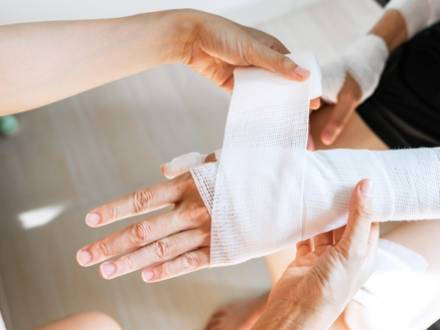 The issue of burns in nursing homes is a major concern, raising important questions about safety, care standards, and potential abuse. While some burns can occur accidentally, other burns may signify deeper issues related to neglect or poor treatment. Understanding the context in which these burns arise is crucial for residents and their families, especially if they suspect abuse or neglect is to blame. If you suspect your loved ones burns are related to nursing home abuse or neglect, contact a lawyer in Illinois immediately.
The issue of burns in nursing homes is a major concern, raising important questions about safety, care standards, and potential abuse. While some burns can occur accidentally, other burns may signify deeper issues related to neglect or poor treatment. Understanding the context in which these burns arise is crucial for residents and their families, especially if they suspect abuse or neglect is to blame. If you suspect your loved ones burns are related to nursing home abuse or neglect, contact a lawyer in Illinois immediately.
Accidental Burns Present a Fairly Common Risk in Nursing Homes
Burns in nursing home residents can occur for several reasons, including accidents related to cooking, hot water exposure, or mishandling of heating devices. Many residents may have limited mobility, cognitive impairments, or weakened sensory responses, making them more vulnerable to burns. For example, they might not be able to recognize the hot surfaces or may struggle to move away from danger swiftly.
Three Examples of Life-Threatening Nursing Home Injuries
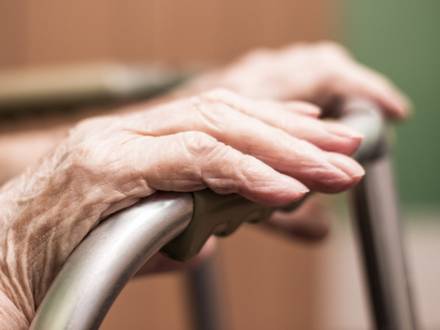 No family sends their loved one to a nursing home facility with the expectation he or she may experience a life-threatening injury while living there. However, such incidents do tragically occur more often than many people would like to think. Three examples of life-threatening injuries that can take place in a nursing home include choking, infections, and falls. If your loved one has suffered from any of these or was injured in another way at his or her nursing home, contact a lawyer right away.
No family sends their loved one to a nursing home facility with the expectation he or she may experience a life-threatening injury while living there. However, such incidents do tragically occur more often than many people would like to think. Three examples of life-threatening injuries that can take place in a nursing home include choking, infections, and falls. If your loved one has suffered from any of these or was injured in another way at his or her nursing home, contact a lawyer right away.
Infections Represent a Silent Threat
Infections can be a significant risk for nursing home residents, often due to decreased immunity or underlying health issues. Common infections such as pneumonia and urinary tract infections can escalate quickly and prove fatal if not treated promptly and effectively.

 312-535-4625
312-535-4625





